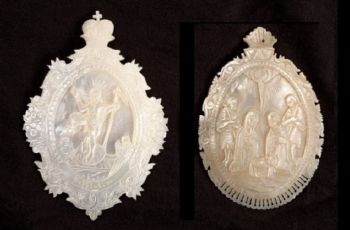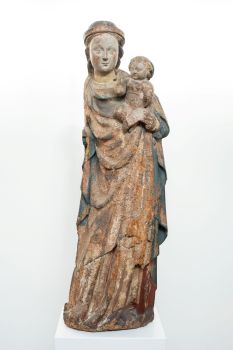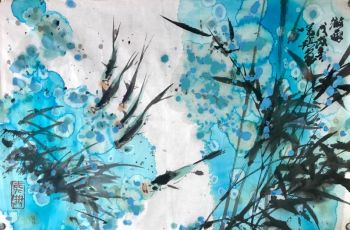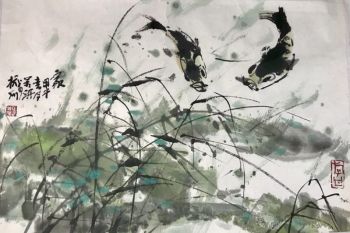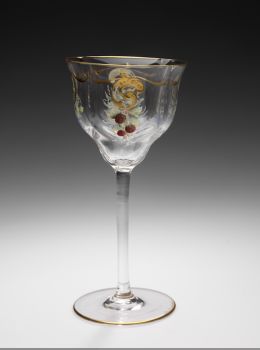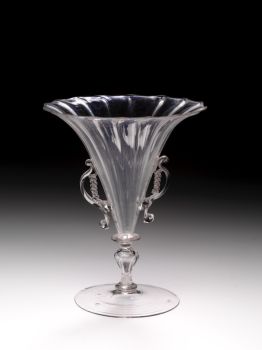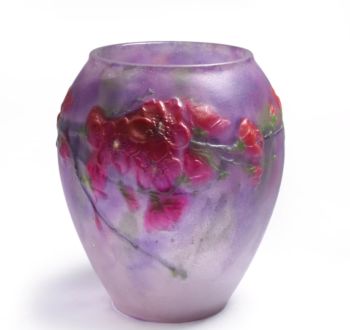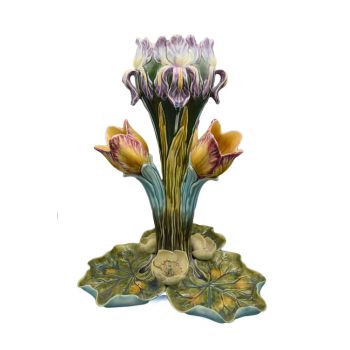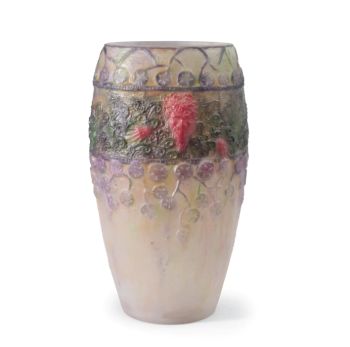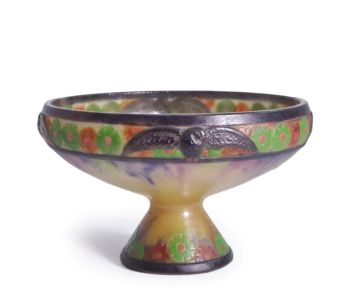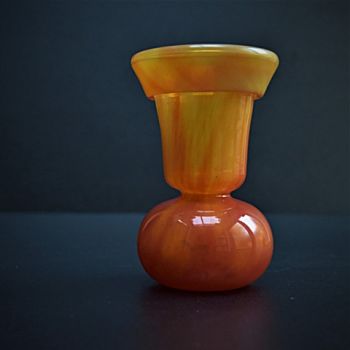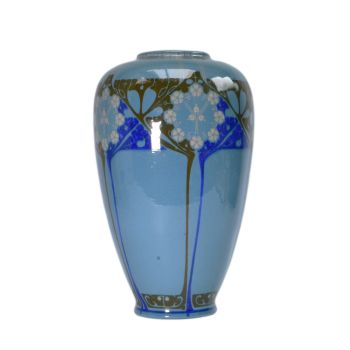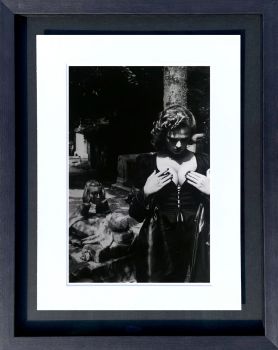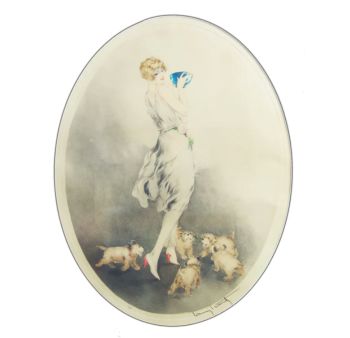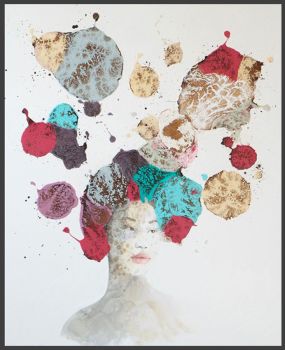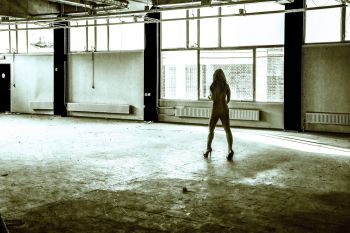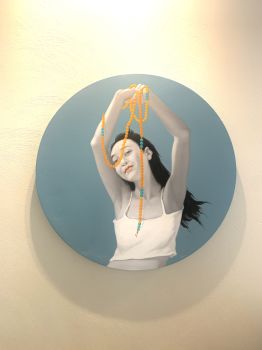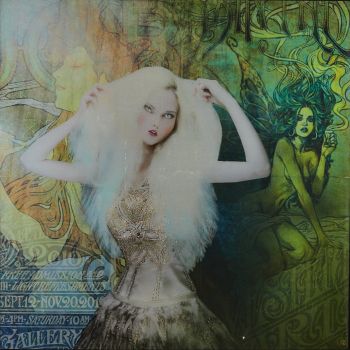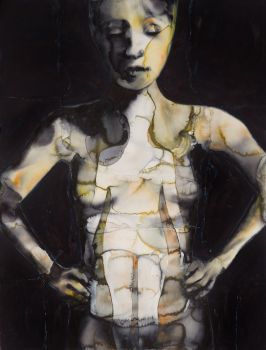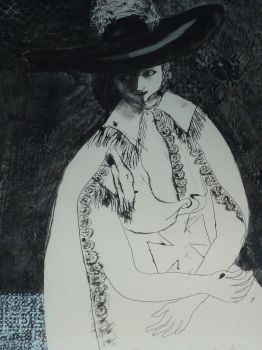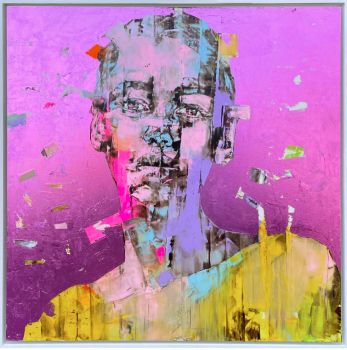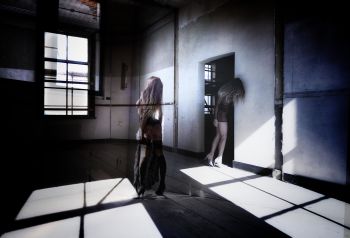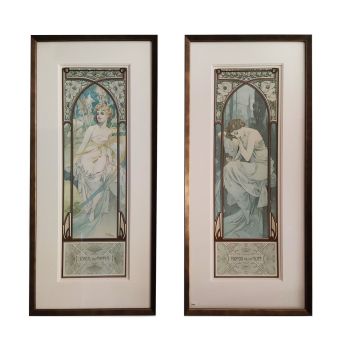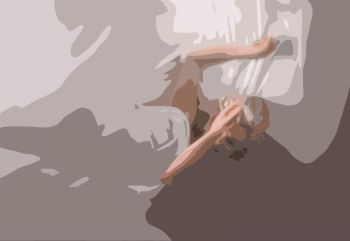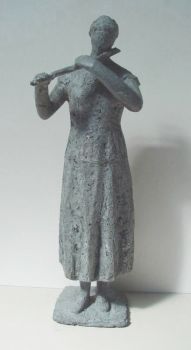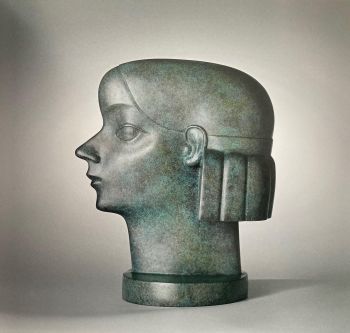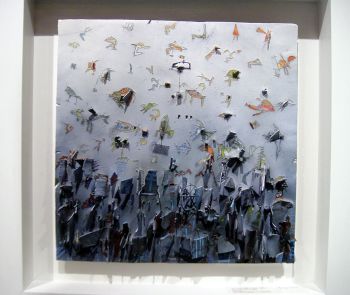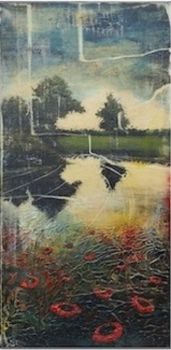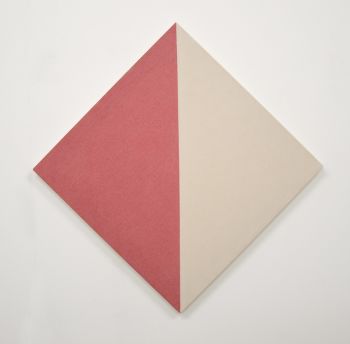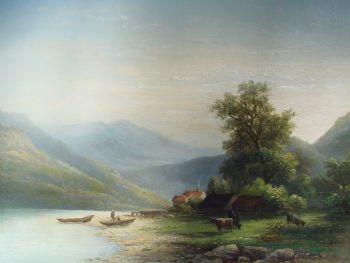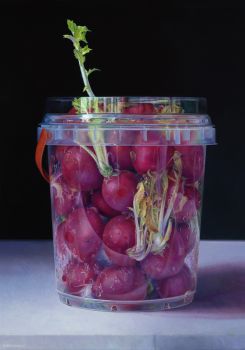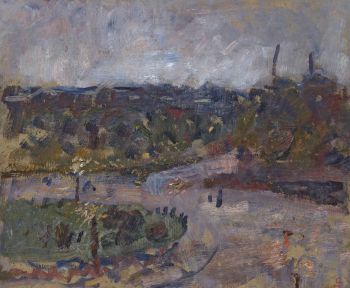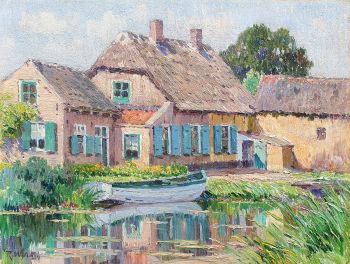Dutch Delft chinoiserie plaque, 18th century 1760
Onbekende Kunstenaar
GlazuurKeramiekAardewerkVerf
35 ⨯ 31 cm
ConditionVery good
€ 1.950
Verkoulen Oriental & European Antiques
- Over kunstwerkA colorful grand feu oval shaped Delft chinoiserie plaque with a Long Eliza, crawl and peony flower decoration, 18th century, around 1760, Delft, Holland.
Dimensions: 35x31 cm.
Probably attributable to the pottery factory 'The White Star / De Witte Ster'.
The word "plaque" has its roots in Latin. It is derived from the Latin word "placa," meaning a flat, thin plate or slab. Antique plaques were especially made for decorative proposes. This particular plaque has a very unusual shape because the oval form has sharp ends looking like accolades. In this shape we can see the influence of the Rococo style. This style can be recognized by asymmetry and curved lines and had its main impact on interior decoration and applied art in Europe between 1730 and 1760.
The decoration is inspired by the Chinese Qianlong porcelain (1735-1796). The Long Eliza, crawl and peony flower are located in a typical Chinese fenced garden with rocks. In the second half of the 18th century these decorations became popular for especially the design of plaques. This can be explained by the influence of the Rococo style which typically displays lighthearted and elegant scenes.
The object has a striking color scheme. We can mainly see the red, yellow and deep blue but also a soft green, manganese (purple) and lighter blue. The use of this color scheme indicates a great craftmanship because of the time-consuming baking processes that was necessary to realize the result.
This plaque can probably be attributed to the pottery factory 'The White Star / De Witte Ster'. A similar decorated example has been auctioned in 2018, with the mark of this factory on her back (which is also a star)
Condition: good condition, minimal damage to the edge which is usual for Delft pottery. No defects or restorations.
Reference: A similar example but with another border is in the collection of Musée Ariana, Ville de Genève (inventory number; AR 2007-146-2). This work features on the cover of the book (and exhibition) of Anne-Claire Schumacher “La donation Clare van Beusekom-Hamburger, Faïences et porcelaines des XVIe-XVIIIe siècles” 2010.
For comparable examples see:
-Christies 13 November 2019, Live auction 17185 ‘The Collector: European and English Furniture, Ceramics, Portrait Miniatures & Works of Art’, Lot nr. 139.
-Christies 24 June 2020, Online auction 19597 ‘Arts from the kiln: ceramics through the centuries’, Lot nr. 18. - Over kunstenaar
Het kan voorkomen dat een kunstenaar of maker onbekend is.
Voor sommige werken is het niet te bepalen door wie het gemaakt is of dat het is gemaakt door (een groep) ambachtslieden. Voorbeelden zijn beelden uit de Oudheid, meubels, spiegels of handtekeningen die vaak niet duidelijk of leesbaar zijn. Maar ook sommige werken zijn helemaal niet gesigneerd.
Ook kunt u de volgende beschrijving vinden:
•"Toegeschreven aan …." waarschijnlijk een werk van de kunstenaar maar niet zeker of gedeeltelijk
•“Atelier van ….” of werkplaats van” een werk uitgevoerd in het atelier of atelier van de kunstenaar, eventueel onder zijn toezicht
•“Cirkel van ….” een werk uit de periode van de kunstenaar die zijn invloed laat zien, nauw verbonden met de kunstenaar maar niet noodzakelijkerwijs zijn leerling
•“Stijl van ….” of “Volger van ….” een werk uitgevoerd in de stijl van de kunstenaar, maar niet noodzakelijk door een leerling; kan eigentijds of bijna eigentijds zijn
•“Wijze van ….” een werk in de stijl van de kunstenaar maar van latere datum
•"Na …." een kopie (van welke datum dan ook) van een werk van de kunstenaar
•“Getekend…”, “Gedateerd….” of “Ingeschreven” dan is het werk gesigneerd/ gedateerd/ ingeschreven door de kunstenaar. De toevoeging van een vraagteken duidt op een element van twijfel
•"Met handtekening ...", "Met datum ...", "Met opschrift..." of “Draagt signatuur/datum/opschrift” dan is de handtekening/datum/opschrift toegevoegd door iemand anders dan de kunstenaar
Bent u geïnteresseerd om dit kunstwerk te kopen?
Related artworks
Onbekende Kunstenaar
Series of 6 Chinese cups and saucers (Yongzheng period)1722 - 1735
Prijs op aanvraagKuipers Kunst & Antiek
Onbekende Kunstenaar
Monumentale houten icoon: De heilige Nicolas van Mozaisk1600 - 1650
Prijs op aanvraagKunsthandel H.W.C. Dullaert Icons
Onbekende Kunstenaar
Medieval Maria with child sculpture1450
Prijs op aanvraagRemco van Leeuwen Antiquair
Onbekende Kunstenaar
Enchanting 1870s Vintage Fly Brooch: Victorian Elegance in Gold1870
€ 4.600Adin Fine Antique Jewellery
 Gecureerd door
Gecureerd doorDanny Bree
1 - 4 / 12- 1 - 4 / 5
Onbekende Kunstenaar
Venetiaans Gevleugeld Glas1550 - 1599
Prijs op aanvraagPeter Korf de Gidts - Antiquairs
Onbekende Kunstenaar
Cristallo façon de Venise Drinkglas1600 - 1650
Prijs op aanvraagPeter Korf de Gidts - Antiquairs
1 - 4 / 24Jan Sluijters
interieur met twee dames en een meisje1900 - 1950
Prijs op aanvraagStudio 2000 Art Gallery
1 - 4 / 24- 1 - 4 / 24
- 1 - 4 / 8













